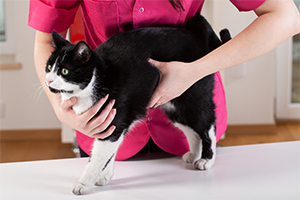Cats are prone to worm infestation; they can get tapeworms quickly. These are common intestine parasites of cats that they can get by eating infected animals, food, or fleas. You can even see these worms with the naked eye in the poop of your cat. It may be a problematic situation for you. But, do not worry. Fortunately, these worms rarely cause any infection in your cat. You can treat them using simple techniques and tips, but first, you should know their root cause. it is essential to know what causes tapeworms in cats
Related Topics You Might Like:
Buy Links For Cat Tapeworm Treatment
"(Paid Links)" ▶ As an Amazon Associate, We earn from qualifying purchases.
What is a tapeworm
Cat and dog tapeworms are flat, segmented intestinal parasites. They are not related to other intestinal parasites like hookworms and roundworms, which are the most prevalent intestinal parasites in cats and dogs. There are several varieties of tapeworms that can infect pets. Still, Dipylidium caninum is the most common one seen in cats. The tapeworm anchors itself to the small intestinal wall with its hook-like mouthparts. Adult tapeworms can grow up to 11" long (30 cm). its single segment is called proglottids break off from the main body of the tapeworm as it matures and transits through the cat's feces. The segments look like rice grains or cucumber seeds.
Signs of tapeworms in cats

Tapeworms are rarely the cause of significant illness. Tapeworm symptoms in cats differ from case to case. The spectrum of clinical indications depends on your cat's age, condition, and the severity of the infection. Tapeworms in cats can cause the following signs and symptoms:
Some, all, or none of these symptoms may be present in a cat with tapeworms. Cats with low infection levels may show no symptoms at all. However, cats with higher infection levels may experience rarer and more significant symptoms such as convulsions, intestinal obstructions, and drastically reduced body conditions. Adult cats with a healthy immune system have fewer symptoms. However, kittens and cats with weakened immune systems may have more. Tapeworms may be visible as well. Tapeworms shed segments called proglottids, which resemble rice grains. These white or golden segments can be observed in cat feces and surrounding the anus.
What causes tapeworms in cats?
Tapeworms can infect cats in various ways, depending on the tapeworm species. Most tapeworms need an intermediate host, which cats must consume to become infected.
Among the most common causes are:
How to diagnose tapeworms?
The most typical sign that a cat has tapeworms is the presence of proglottids in feces or vomit, which the owner notices and reports to the veterinarian. Segments of the tapeworm can be seen crawling on the surface of the feces when they separate and pass into the cat's stool.

These proglottid segments resemble cooked white rice grains or cucumber seeds. Segments traveling around the cat's anus are less common. It's worth noting that tapeworms are challenging to detect with conventional fecal investigations. As a result, if tapeworm segments are discovered in your cat's stool, you should contact your veterinarian.
Tapeworm Treatment for Cats
Adult tapeworm treatment is an outpatient procedure with an injection or oral medicine. You can remove tapeworms with deworming drugs that are both effective and safe for your cat. The tapeworms will usually disintegrate in the cat's intestines after treatment. Unless there is a very high worm load, you won't observe tapeworms expelled into the feces. To guarantee that the tapeworms are gone from your cat's body, you must administer the entire course of treatment.
Preventive measures
Kittens can be treated for tapeworms every month starting at six weeks. They can get this treatment every three months after six months. This preventative medication can be given to adult cats every two to six months, depending on their needs. Always check with a veterinarian to see if preventative therapy is appropriate for them. One of the most common causes of tapeworms in cats is flea consumption. Flea spot treatments are an excellent way to keep fleas away from your cat. Flea collars and oral medicine are options for flea control for your cat.

